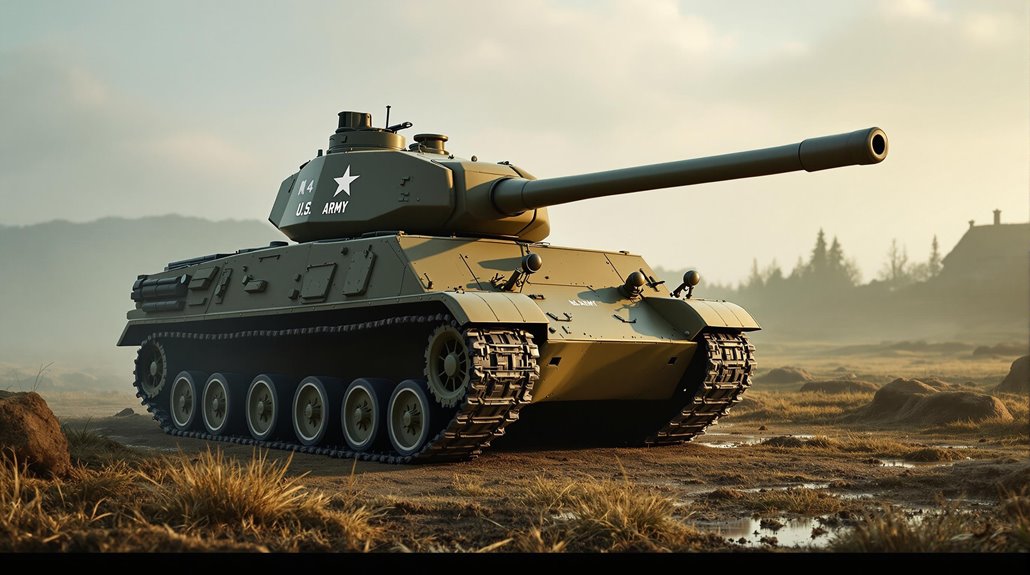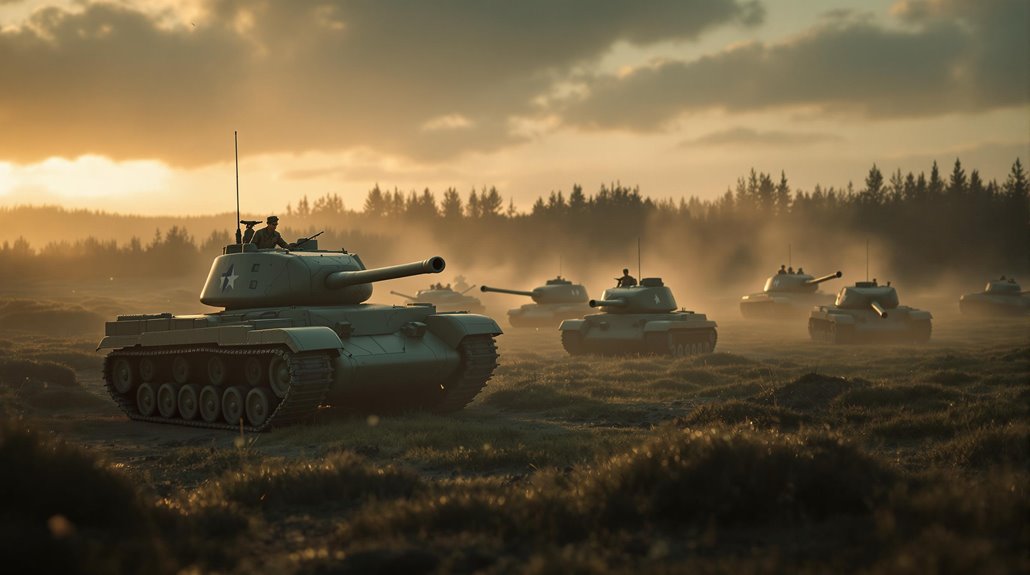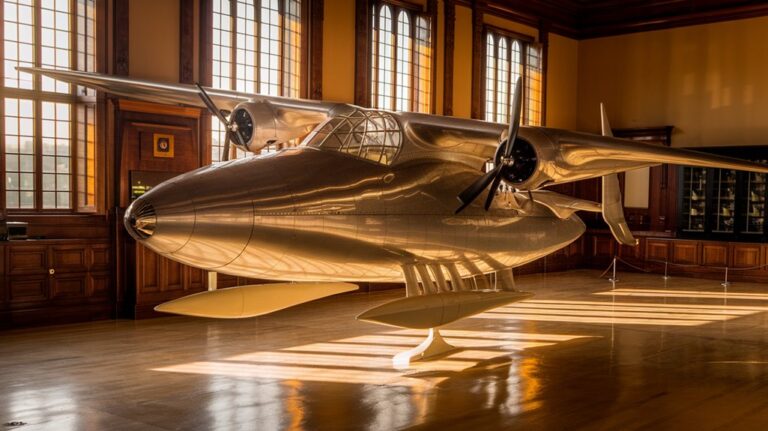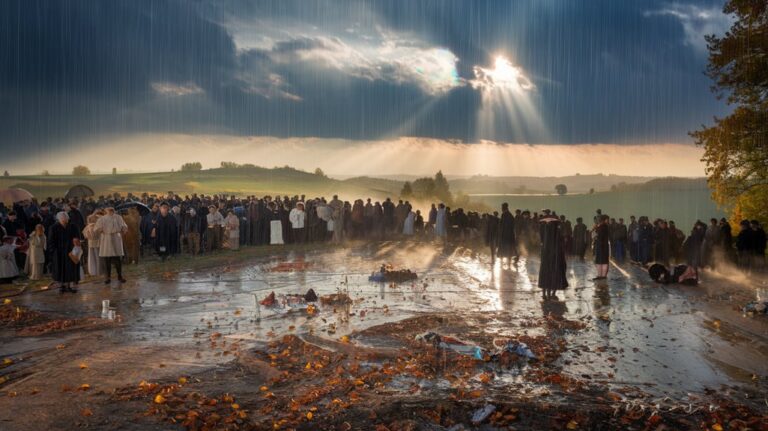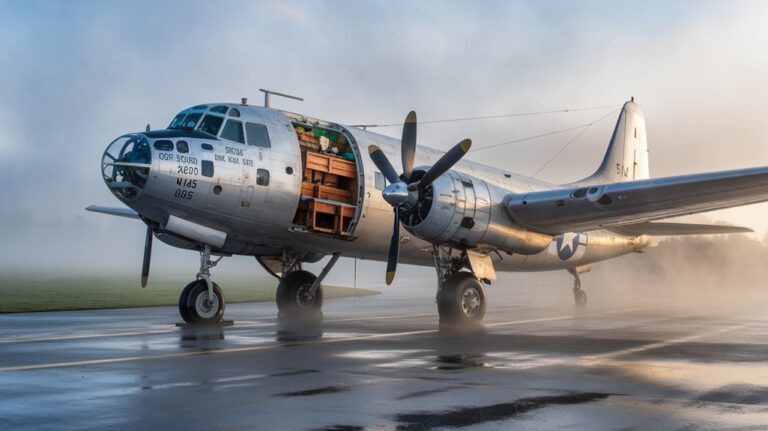The U.S. Army Used a Ghost Army of Inflatable Tanks in WWII
You've probably heard of tanks, troops, and traditional warfare during World War II, but there's another story that remained classified for decades. In 1944, the U.S. Army deployed a secret weapon: a phantom force of inflatable tanks and fake military installations. This unit, known as the Ghost Army, didn't fire a single shot, yet they saved thousands of lives through elaborate deception. Their mission was simple – fool the enemy – but their methods were anything but ordinary.
Birth of the 23rd Headquarters Special Troops
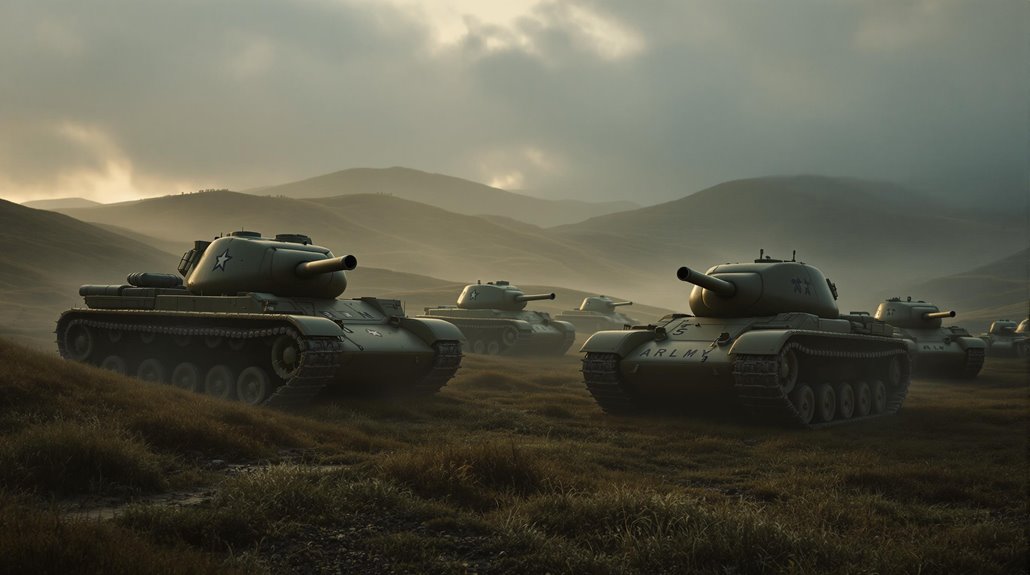
A remarkable act of military misdirection began when the U.S. Army activated the 23rd Headquarters Special Troops on January 20, 1944.
Colonel Billy Harris and Major Ralph Ingersoll conceived this pioneering unit, drawing inspiration from British deception strategies used in Operation Bertram.
The unit conducted 22 major operations across Europe after the D-Day invasion.
You'd be impressed by their creative recruitment approach – they assembled a unique force of 1,105 men led by Colonel Harry L. Reeder.
They handpicked artists, engineers, and professionals from advertising agencies and art schools, including future fashion icon Bill Blass and artist Ellsworth Kelly.
The unit's average IQ of 119 reflected their selective standards.
This specialized unit could effectively simulate two full divisions, approximately 30,000 troops, using their deception tactics.
After training at Camp Forrest and Camp Pine, these master illusionists sailed for Britain in May 1944.
They'd soon put their skills to work, arriving in Europe just before D-Day to begin their mission of fooling Hitler's forces.
Masters of Military Illusion: Equipment and Tactics
These creative minds needed cutting-edge tools to pull off their grand deception, and the Ghost Army's arsenal didn't disappoint.
Their inflatable technology included life-sized M4 Sherman tanks that you could set up in just 20 minutes, complete with rubber artillery pieces and planes to create convincing fake installations.
But the deception tactics went far beyond visual props. You'd hear massive speakers broadcasting pre-recorded sounds of military activity, while radio operators precisely mimicked the morse code patterns of real army units. The operation was so detailed that double agents helped sell the deception to German intelligence.
When real tanks moved from their positions, dummy tanks replaced them to maintain the illusion of a full fighting force.
Soldiers even masqueraded as other divisions, wearing false patches and insignias to sell the illusion. They'd carefully conceal their work under camouflage nets, creating an intricate web of fakery that combined physical props, sound effects, and skilled impersonation to fool German intelligence about Allied troop positions and strength.
The Artists and Engineers Behind the Deception
Behind the Ghost Army's masterful deception stood an extraordinary collection of creative minds, including future fashion icon Bill Blass and renowned painter Ellsworth Kelly.
The unit brought together talented artists, engineers, and soldiers who'd use their unique skills to craft one of history's greatest artistic deceptions. The troops engaged in over 20 operations throughout the European theater.
You'll find it fascinating that these specialists weren't just random recruits – they'd an average IQ of 119, one of the highest in the Army.
Fashion design expertise helped create convincing dummy equipment, while sound engineers mastered battlefield audio illusions.
The unit successfully simulated the presence of two entire divisions, creating the illusion of approximately 30,000 troops where there were none.
The 603rd Camouflage Engineers specialized in visual trickery, and the Signal Companies excelled at radio deception.
Engineering innovation shone through their construction of fake artillery positions, while artists like Arthur Singer and Art Kane applied their talents to camouflage designs that fooled enemy observers.
Operation Viersen and Other Notable Missions
During the final months of World War II, Operation Viersen emerged as the Ghost Army's crowning achievement, deploying 600 inflatable tanks and vehicles to successfully simulate two entire infantry divisions. This masterful deception drew German forces away from the actual Rhine River crossing point, saving thousands of Allied lives. Much like the British forces who could construct two dummy tanks per day in North Africa, the Ghost Army became highly efficient at deploying their deceptive arsenal.
You'll find that wartime creativity reached new heights as the Ghost Army employed multiple deception strategies throughout their campaigns. Major Ralph Ingersoll and Colonel Billy Harris combined creative tactics to establish this innovative unit, drawing inspiration from British deception operations. They used sound effects to mimic troop movements, transmitted fake radio signals, and even had soldiers wear patches from other units to complete the illusion.
Beyond Viersen, they executed vital missions like Operation Bettembourg, where they held Patton's undermanned line, and Operation Kodak during the Battle of the Bulge. Through more than 20 operations, they consistently fooled German intelligence and earned high praise from military leadership.
The Ghost Army's Legacy Finally Revealed
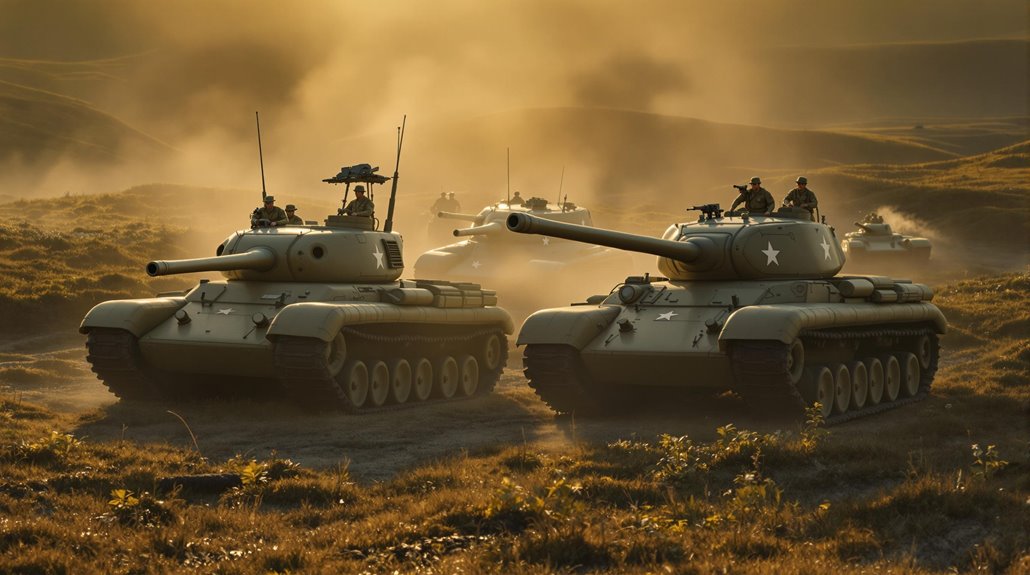
Secrecy shrouded the Ghost Army's remarkable achievements for over five decades after World War II, as their tactical deceptions remained classified until 1996.
The 1,100 soldiers worked tirelessly to create elaborate illusions that fooled German forces throughout Europe.
Combat engineers deployed crafty techniques like inflatable tanks, fake radio traffic, and military soundscapes to accomplish their missions.
After declassification, you'd see their legacy impact grow through books, documentaries, and museum exhibits, with Rick Beyer's PBS documentary in 2013 bringing their story to millions.

